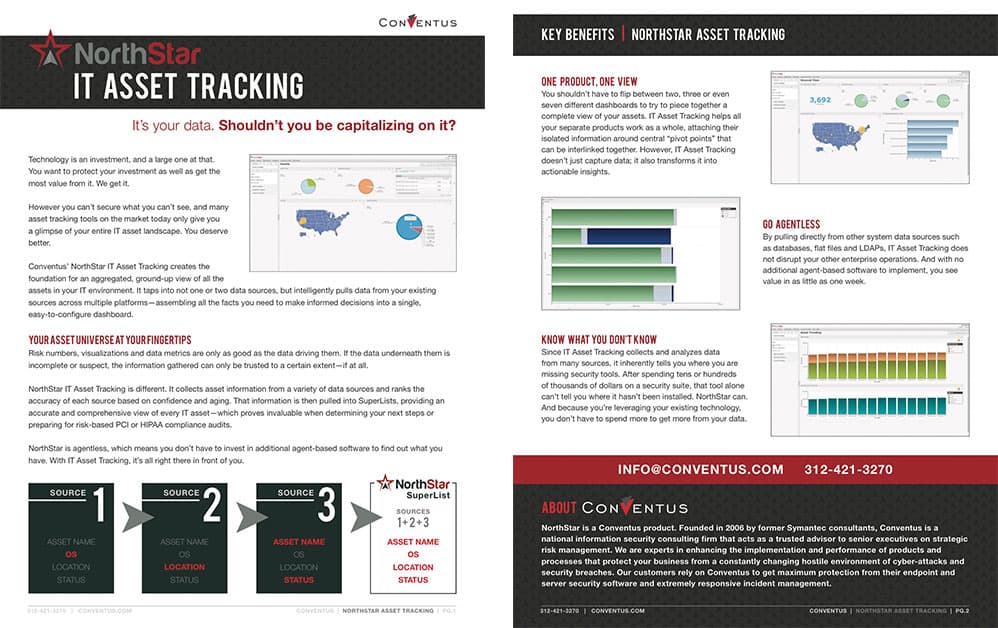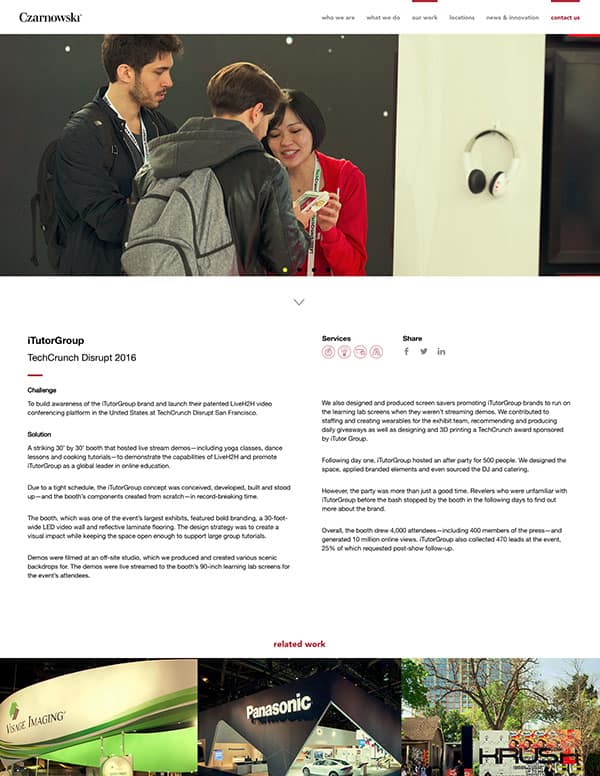You’ve done the work. You identified your audience, established your objectives and determined what types of content you need to create to achieve them. Cool.
Now all that’s left is creating the content. Less cool.
To many marketers, content creation is intimidating. It takes time, energy and discipline. It also means writing something (enter collective shudder here).
But like most scary things, content creation is easier when you have a clear direction. So we’ve compiled some general guidelines and examples for four common types of content below. Because sometimes all we need to conquer our fear is a place to start.
1. Blog post
PURPOSE
Blog posts should be actionable—meaning they should help the reader identify or solve a problem as well as provide clear takeaways regarding next steps.
They should also be entertaining. Just because something is informative doesn’t mean it has to be boring. So find ways to incorporate humor, metaphors and anecdotes that illustrate your post’s primary focus without detracting from it.
Additionally, blog posts should take a stand. Posts that are clear, sharp and authoritative give you the opportunity to establish yourself and/or your company as an expert on a particular topic.
STRUCTURE
Blog posts are structured like a narrative. In addition to an intriguing title, there’s a beginning (introduction), a middle (body copy) and an end (conclusion). And like your favorite stories, high-performing blog posts include at least one—if not several—images.
Remember, one of your goals in creating a blog post is to be entertaining. So give your readers a visual break and add a funny GIF, a thought-provoking infographic or a few captivating pictures. Other elements that contribute to creating an engaging (and visually interesting) blog post include bulleted lists, section headers, bolded call outs and checklists. These components make it easy for readers to scan through your post and still gather important details.
LENGTH
Best practices suggest that a blog post should be at least 500 words. Why? Because more words equal more chances to improve your rank in the search engines. And the higher you rank, the more eyes that will see your post.
Ranking is great, but what about audience engagement? Research indicates that posts around 1,600 words in length captured the most attention. However, the truth is that successful blog posts come in all shapes and sizes. So try out a few different lengths and write the blog posts that work best for your audience.
2. Sell sheet
PURPOSE
The purpose of a sell sheet is to summarize the attributes and benefits of your product or service in a succinct yet compelling way. Think of your sell sheet as an advertisement that exists solely to grab the attention and interest of your potential customers.
STRUCTURE
Effective sell sheets have the following elements in common.
- Headline
- A sell sheet headline should be irresistible; it’s the bait you use to lure potential customers.
- Product or service overview
- Once you’ve hooked them with your headline, hit your potential customers with a succinct summary of what your product or service is and how it’s different from what your competitors offer.
- Customer benefits
- What do potential customers care about most? Themselves. Let them know how your product or service makes their job, life or self easier, better or more attractive.
- Company description
- If you think everyone knows about your company, think again. Unless you work for Apple, Google or some other titan of industry, play it safe and include a brief description of what you do.
- Contact information
- The objective of a sell sheet is to generate interest in your product or service. Don’t leave your potential customers hanging. Provide contact information so they can reach out and learn more.
LENGTH
The name of the game is sell sheet, not sell sheets. That means the ideal length is 1-2 pages max. Your sell sheet should provide the reader with enough information to understand the solutions you offer, but not so much information that they get overwhelmed and lost in the minutiae. You also want it to be easy for them to print out and share with all their friends.;

3. Case study
PURPOSE
Saying you can do something is good. Proving you can do it is better. Case studies are how you show off the great work your company does or the valuable products it offers.
The implication of a case study is that if you can provide tremendous value to one customer, you can also provide it to the reader.
STRUCTURE
We’ve found that the best structure for case studies—both for our company as well as for our clients—is an objective, challenge, solution and results format.
Objective: what was the customer trying to achieve?
Challenge: what stood in the way of the customer achieving that objective?
Solution: how did you overcome that challenge and why is your company uniquely positioned to deliver that solution?
Results: what (preferably measurable) results did your solution deliver for the customer?
Other elements you can include in a case study are images of your work or your product as well as testimonials from your customer. These offer additional proof of the quality of your products or services.
LENGTH
Best practices suggest case studies should be approximately 500 words. This length allows readers to easily skim and consume the highlights while still providing enough detail to prove the value of your company’s products or services.

4. Landing page
PURPOSE
Landing pages are used to capture a visitor’s information, such as their name, company and email address, so that you can connect with and market to them in the future.
STRUCTURE
Effective landing pages use a combination of the following elements to convert visitors into leads:
- Main headline
- The main headline is the first thing a visitor sees. It’s crucial that it clearly and succinctly describes the key benefit a visitor will get from converting on this page.
- Supporting headline
- Your main headline can only say so much if you want to keep it short and punchy. Sometimes you need a secondary headline to provide clarification and extend the message of the main headline.
- Body
- The purpose of your headline is to grab attention. Your body copy must hold that attention by providing more details on what the offer is and how the visitor can benefit from it.
It’s important to not get into so much detail that your landing page feels like a giant block of text. Including a mix of text, bulleted lists and images help strike the right balance. - Call to action
- The call to action is a directional cue pointing the reader towards the form fields.
- Form fields
- The length of your form and the level of personal data requested can have a direct impact on conversion. It’s important to balance the amount of information you need from your leads against how much information the visitor feels comfortable providing you.
- Convert button
- The convert button should be a brief, actionable directive to submit the form.
- Social proof
- Social proof is persuasive because it demonstrates that other people have bought into what you’re offering. Examples of social proof include client logos, testimonials and awards.
LENGTH
Best practices suggest the optimal word count for a landing page is at least 500 words. More words give you more opportunities to persuade the reader to do what you want them to: convert.

Get started
The only way to conquer your content anxiety is to give it a try and see what happens. The results might surprise you.
